No products in the cart.
News
9 INTERESTING FACTS ABOUT SEAGRASS IN VIETNAM
Vietnam is a country rich in handicraft products, thanks to the Vietnamese people’s spirit, skill, and creativity. In particular, Seagrass plays the role of one of the crucial raw materials in the production of handicrafts. So why is seagrass so important? Here are 9 interesting facts about seagrass in Vietnam.
1. Seagrass is native to Vietnam
Seagrass has existed for more than 5 centuries in Vietnam. Seagrass has been with farmers for many years, from times of hardship and difficulty to times of peace and prosperity.
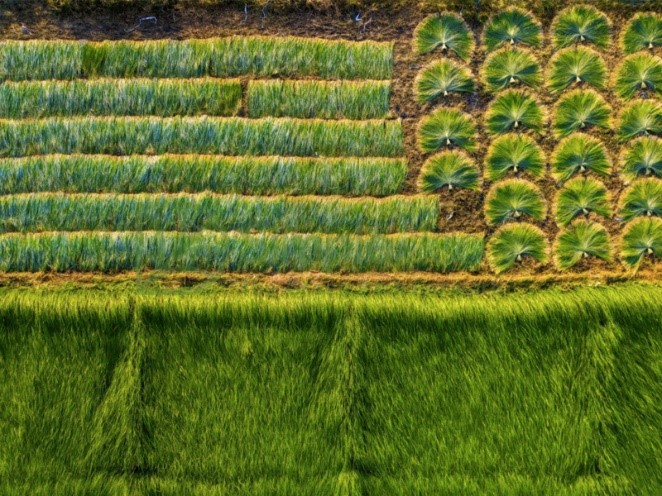
Seagrass is also mentioned in Vietnamese folklore. According to the ancients, on a sunny autumn afternoon like silk, a group of fairies came to play at the mouth of this sea. Before the wonderful natural scene, the sky and sea harmonized, and the most beautiful seventh fairy cut her hair and threw it into the sea. Her hair drifted wherever the waves hit, meeting the alluvial ground that grew into seagrass.
2. Seagrass, its features and outstanding benefits
In Vietnam, seagrass adapts extremely well to the climate and is grown in the northern provinces from Quang Ninh to Thanh Hoa and along the coast of the South Central provinces. Places with relatively flat terrain, with a vertical river system, are ideal places to grow seagrass. Seagrass, from growing in the wild with no perceivable use, has become one of the most valuable non-food crops with high economic value on newly reclaimed coastal lands along the estuaries.

Five centuries ago, Vietnamese farmers knew about seagrass cultivation and mat weaving. Localities with a tradition of making traditional crafts from seagrass are Tien Hai (Thai Binh), Kim Son (Ninh Binh), and Nga Son (Thanh Hoa). In particular, the quality of seagrass in Kim Son is highly appreciated with its durability, flexibility, and natural beauty, suitable for producing handicraft products that require high sophistication.
3. Seagrass has many other applications aside from being the primary material used in handicrafts
In addition to being the primary raw material for handicraft products, seagrass has a few other applications. When harvesting seagrass, farmers in some areas dig up the rhizomes (or underground stems), bring them back, wash and dry them, and use them to make medicine. Seagrass medicines are used to treat urination, abdominal pain, and poor digestion.
Seagrass cultivation also has the effect of improving saline soil. Their roots have a special structure that can make the aquatic environment in acidic, salty soil become balanced. The cultivation of seagrass also has the ability to protect dykes, reduce subsidence, and prevent the high water level of tides during storms and floods.
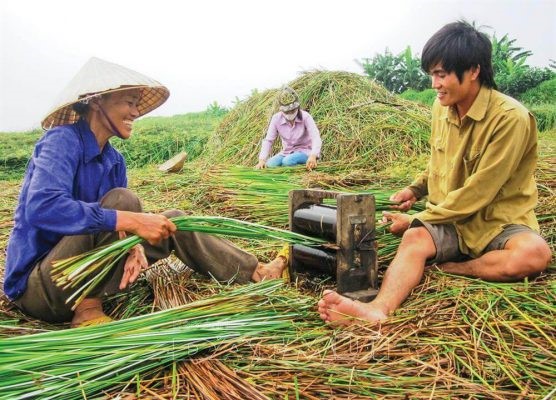
Furthermore, the stems and leaves of some seagrass species are used to feed livestock or as organic fertilizers. To a Vietnamese farmer, all parts of the seagrass plant are beneficial.
4. Many meticulous and careful stages are required in the harvesting of seagrass and making seagrass products
The processes of growing, caring for, and harvesting seagrass are hard work and time-consuming. Fresh seagrass has 3 sharp edges and is quite heavy, so the harvesting work is extremely tiring, especially on hot days. After cutting, seagrass will be transported ashore and gathered to be split in half. Thanks to the support of machinery, this stage is done faster, reducing labor and ensuring better seagrass quality from quick harvesting. To prevent seagrass from drying out and being difficult to split, people will process them wherever they are harvested. After splitting, the seagrass will be dried in the sun for two days in the field before being tied into bundles to take home and prepare for the next stages.

After preliminary processing in the field, seagrass materials are dried. Next, the artisan manually cleans, reprocesses, and dyes fibers to get the desired color. After another drying process, the finished product is obtained. After the artisan’s done his part, the factories finish his products. The factory stores this material and uses Polyascera glue to cover the surface of seagrass products, creating both extra durability and unique design, while improving the product’s ability to resist mold and moisture.
Farmers act as both harvesters and artisans. They take note of weather patterns, then meticulously perform the drying and cutting process in the field. They carefully execute the exact manufacturing stages to produce the highest quality results. Their raw material preservation process is also very strict so that the product can be used for a long time and is durable. Therefore, the quality of Vietnam’s seagrass products is always highly appreciated by foreign partners.
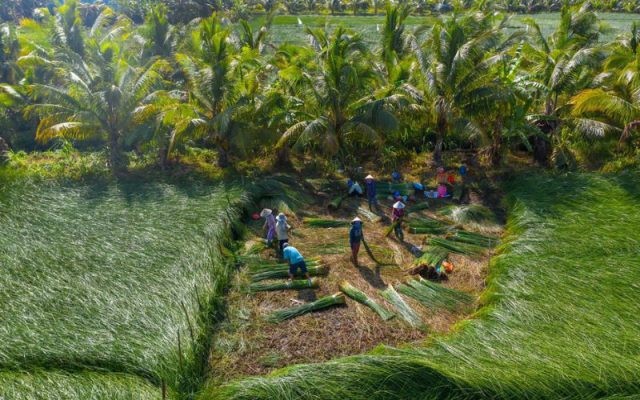
5. Wide range of applications of seagrass products
Seagrass products are very diverse, thanks to the sophisticated hands of skilled artisans, with many different types of weaves, designs, and colors. The best-selling items are Seagrass baskets, Seagrass Tray, Seagrass Wall hangings, etc. All are both useful and beautifully decorated.
Seagrass-based products are extremely multifunctional. The Seagrass Basket can be used to store small items, and clothes, or as a room decoration. Some types of baskets can also make planters. Wall Hanging Baskets can both decorate the wall and can also turn into a plate to hold snacks and fruits. Or they can be used to make wall fans, which can both be used to decorate the wall and as a fan on hot days.
Products made from seagrass in general, as well as Greenvibe’s seagrass products, are all very eco-friendly, sustainable, and have a very natural scent. Because the product is entirely handmade, there are no toxic substances. Furthermore, the product can be biodegradable without harming the environment.
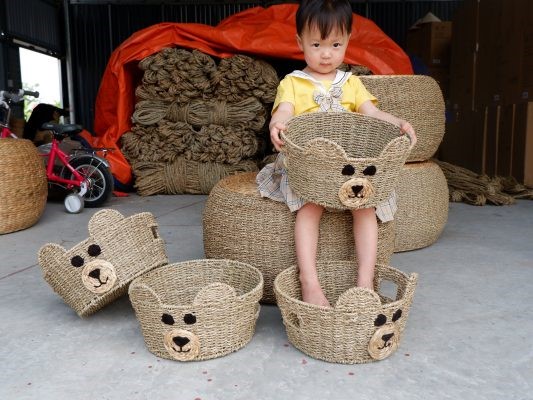
6. Seagrass can be combined with different materials to create many different designs
Handicraft products from SeaGrass can be combined with other Eco-Friendly Materials, such as Water Hyacinth, Palm Leaf, or Corn Husk. With the light brown color of Seagrass, combined with the dark color of Hyacinth or the white color of Corn Husk, it will create a harmonious aesthetic for the product
There are many products that are made from seagrass and other ingredients, such as Cube Basket, Hamper Basket, etc.
7. Seagrass products are becoming more and more popular around the world
In Vietnam, the export of handicraft items is growing rapidly. More specifically, seagrass products have only been developed and exported to foreign countries in the past 10 years. In the past, in traditional craft villages, farmers used seagrass only for knitting simple mats to sit or sleep on. These mats are extremely popular at home, but very few are exported abroad. Recognizing the potential of seagrass in the country, commercial enterprises have made plans to take seagrass products further beyond Vietnam’s borders. And that also contributes to shaping the handicraft market now.
Seagrass farmers have also maintained their traditional craft, and seagrass crafting has also been developed. Mr. Ton, a pioneer in bringing seagrass products to the international market, shared: “In order to revive, maintain and develop the seagrass profession, the only way is to expand the market and, in particular, to raise the production of seagrass and the skills of farmers”. Thanks to the help of machines, farmers and artisans no longer face the same difficulties as before. Their export products are also of better quality.
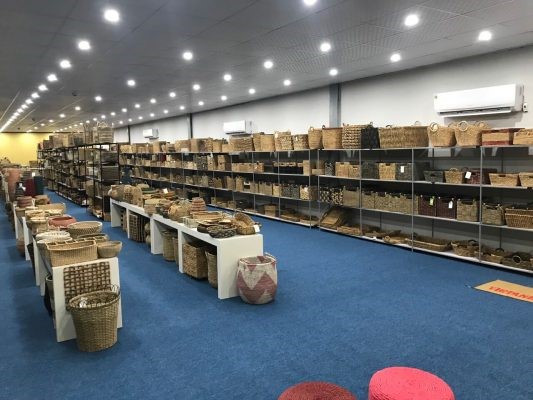
Many large brands have cooperated with suppliers and factories in Vietnam to import seagrass trees for sale. Baskets and planters are trendy in the US, while in Europe, people prefer wall hangings or smaller baskets. But generally, the international market always appreciates the quality of Vietnam’s seagrass.
8. Seagrass handicraft products are gaining a lot of attention on e-commerce sites
In e-commerce sites, like Amazon, Target, Alibaba, etc. Seagrass products always receive a significant amount of purchases. Foreign buyers are very fond of healthy and environmentally friendly products, so handicraft products made from Vietnamese seagrass are always noticed. In addition, these products are affordable, and often sold in sets. They come in many sizes and can be folded or overlapped. In 2021, handicraft items have become a hot “trend” during the epidemic season on e-commerce sites with huge purchases.
9. Seagrass is an iconic symbol of traditional handicraft villages
In the handicraft village, seagrass is always a symbol. Seagrass is a symbol of people who embark on the sea. Following in the footsteps of coastal people, it has always stood up to all the harsh challenges of salt water, and stormy seas. In Kim Son alone, the slogan “the land is ruled by rice, so must seagrass conquer the sea” has shown the spirit of conquering nature and the spiritual strength of the people here.

Seagrass is soft and shiny, acting as a link between the sea and the shore, between hardworking farmers – artisans and rich, immense nature. Seagrass is a link connecting Vietnam with the world, making a significant contribution to the development of its economy, culture, and tourism. Seagrass also represents the spirit of Vietnamese farmers, a spirit of perseverance, hard work, and diligence.
It can be said that seagrass is very important to Vietnam in general and handicraft villages in particular. Products made from seagrass are being exported more and more all over the world. Foreign partners are always impressed by the quality of Vietnamese seagrass as well as the ingenuity of the artisans who make it.
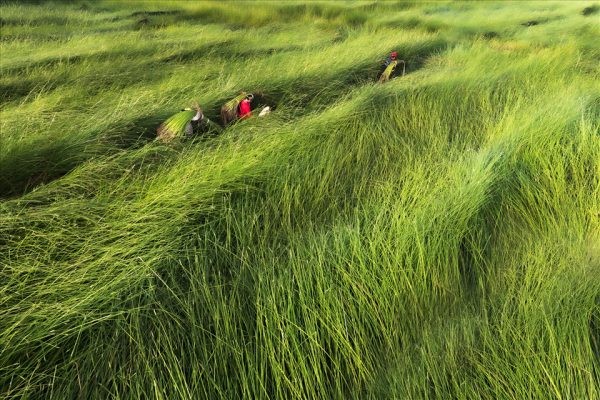
Safimex is a reputable supplier and has a lot of products made from seagrass, besides there are lots of products from water hyacinth and palm leaf, both highly aesthetic and multifunctional. Please contact us at info@safimex.com if you need any information about this product.
Source: Green vibe
SAFIMEX JOINT STOCK COMPANY
Head Office: 216/20a Duong Ba Trac Street, Ward 2, District 8, Hochiminh City, Vietnam.
Tel: (+84)-(28)-3636 2388 | (+84)-(28)-3636 2399 | Website: https://safimex.com/
